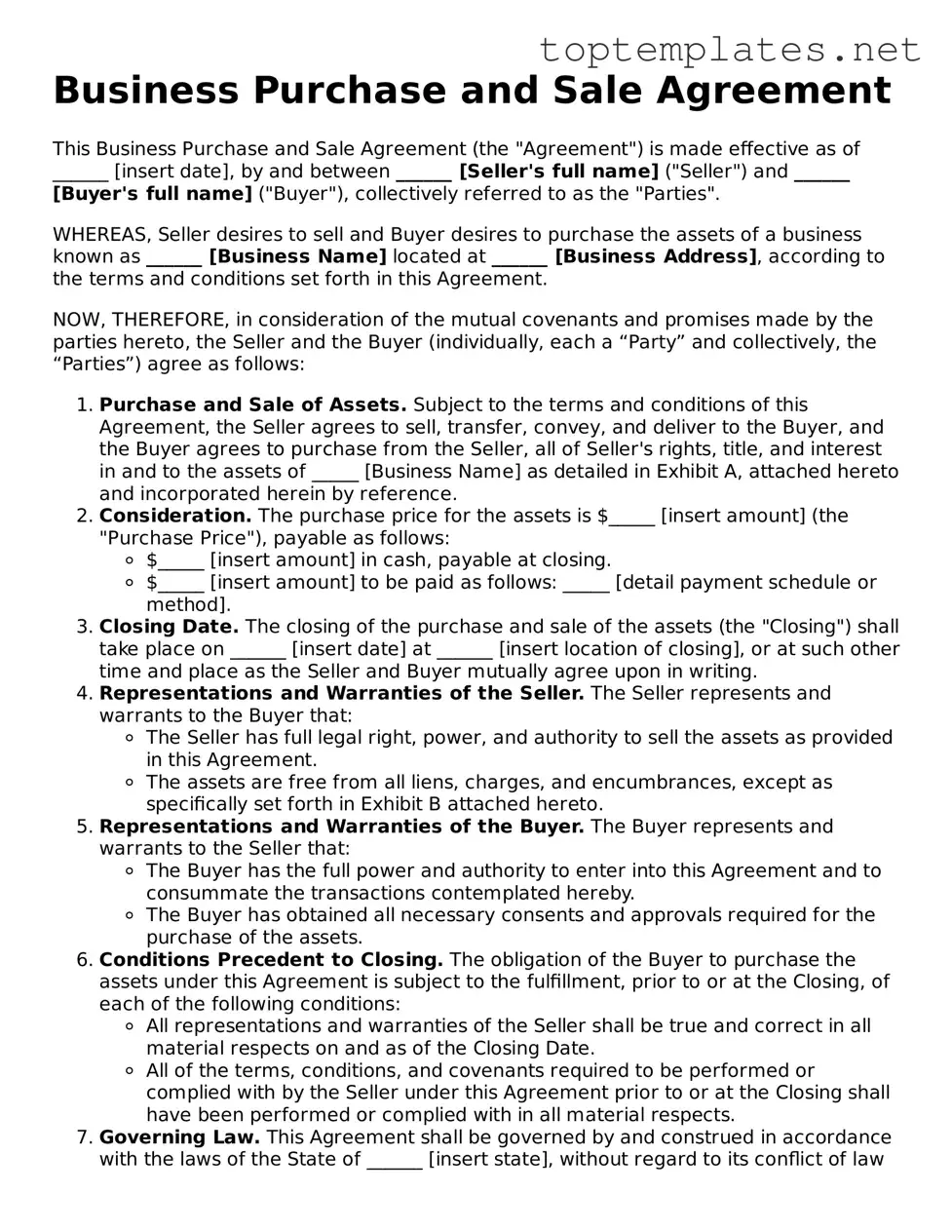What is a Business Purchase and Sale Agreement?
A Business Purchase and Sale Agreement is a legally binding document that outlines the terms and conditions under which a business is being sold and bought. This agreement details the sale's specifics, such as the purchase price, the assets and liabilities being transferred, any conditions precedent to the sale, and the responsibilities of each party involved. Its primary purpose is to ensure that both the seller and the buyer have a clear understanding of their rights and obligations, thereby facilitating a smoother transaction.
Why is it important to have a Business Purchase and Sale Agreement?
Having a Business Purchase and Sale Agreement is crucial because it provides a formal record of the transaction's terms, reducing the risk of misunderstandings or disputes between the buyer and the seller. It ensures that each party knows exactly what they are agreeing to, which can protect both parties’ interests. Additionally, this agreement serves as a comprehensive guide for the transfer process, detailing each step to ensure legal compliance and a successful transfer of ownership.
What information is typically included in a Business Purchase and Sale Agreement?
Though the contents can vary based on the nature of the business and the specifics of the transaction, a Business Purchase and Sale Agreement generally includes details such as the names and addresses of the buyer and seller, a description of the business being sold, the purchase price, payment terms, a list of assets and liabilities included in the sale, any representations and warranties made by the seller, conditions precedent to the sale, and the anticipated closing date. It may also outline any post-sale obligations, such as non-compete clauses and confidentiality agreements.
How does a Business Purchase and Sale Agreement protect the buyer?
The agreement protects the buyer by specifying the conditions under which the sale will proceed, including ensuring that the buyer receives all assets free and clear of undisclosed liens or encumbrances. It also typically includes warranties from the seller regarding the condition of the business and its compliance with laws. These provisions help the buyer to avoid any unpleasant surprises post-purchase and provide a legal basis for recourse should the seller fail to meet their obligations as outlined in the agreement.
Can modifications be made to a Business Purchase and Sale Agreement after it has been signed?
Yes, modifications can be made to a Business Purchase and Sale Agreement even after it has been signed, but any changes must be agreed upon by both the buyer and the seller. These amendments should be made in writing and signed by both parties to ensure they are legally binding. It is essential to approach modifications with caution and ideally with the guidance of legal counsel to ensure that they do not unintentionally affect other parts of the agreement or void any of its terms.
